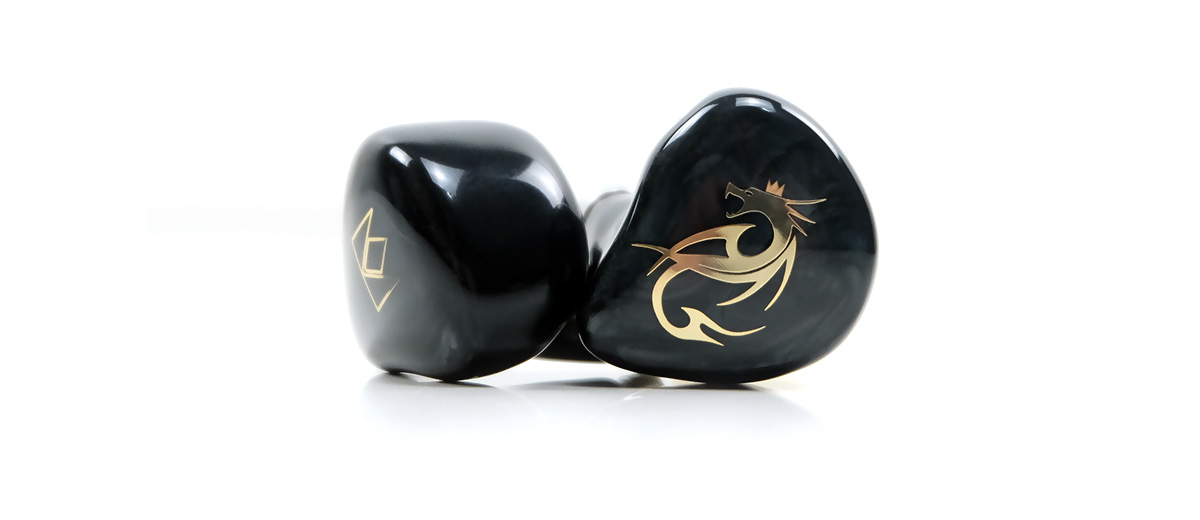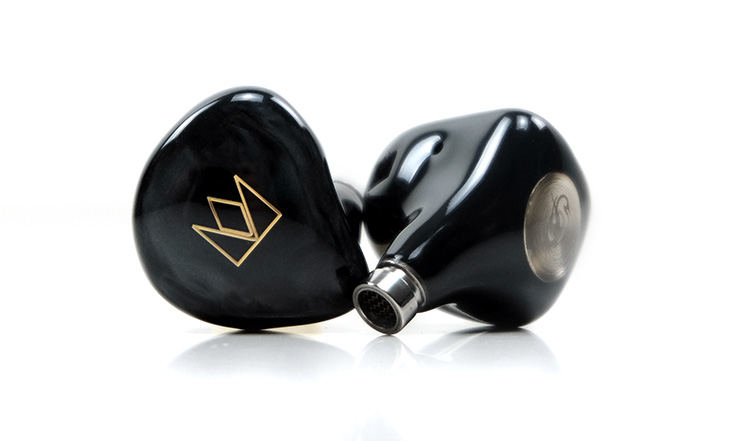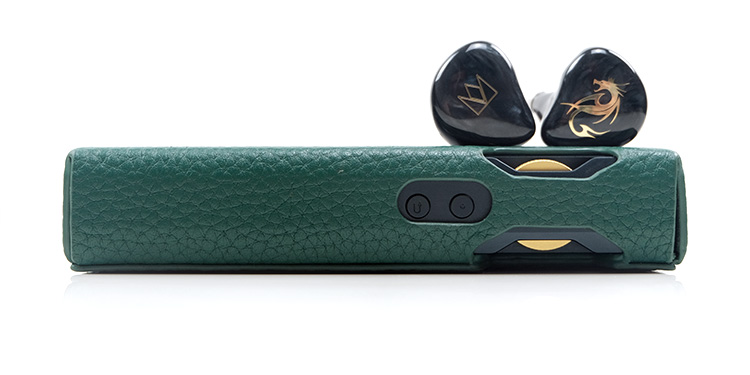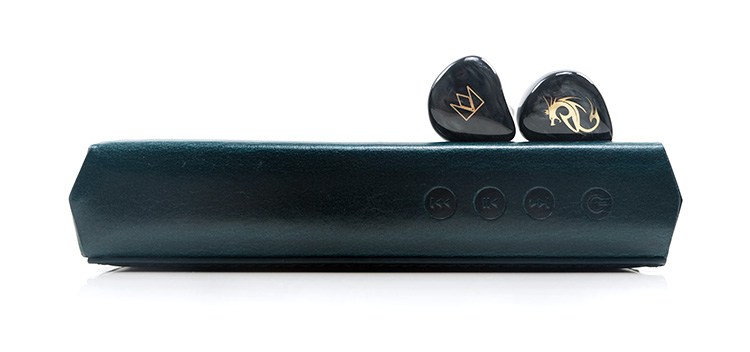Sound Impressions
All sound impressions were compiled using the Cayin N8ii and the HiBy RS8 as sources with a balanced output paired with the stock Kublai Khan cable 4.4mm version.
Summary
The Kublai Khan is in the same ballpark as the original Khan but with a more mature, refined, and natural tuning. This is a tall and deep sound signature with plenty of sparkle and an excellent bass performance marked by its improved texture and presence.
The overall balance is tonally smooth to neutral, erring more to the clean side the closer to the highs you get but with excellent clarity throughout. However, I found moving around the tips selection had a big influence on the final output.
For example, the stock silicone tips sapped a lot of bass body and amplitude leaving it a bit top-heavy in its performance whereas the foam grey wide bore tips introduced some welcome warmth with a fuller meatier performance.
My suggestion is to go with the grey foam tips over the black foam which is comparatively weaker for sub-bass presence despite offering the same smoothness through the mids and highs.
And bass weight is an important factor with the Kublai Khan. A good seal will generate the necessary response from that dynamic driver to bring in a satisfying instrumental note fundamental and a very welcome harmonic balance throughout the rest of the response curve.
It will drive just fine from most DAPs in low gain mode but I did find the dynamic and bone conduction driver tandem to scale better with increased voltage so modes such as the P+ on the Cayin N8ii and the Turbo Mode on the HiBy RS8 tease out a tighter mid-bass slam and a stronger sub-bass rumble.
Frequency Response
If anything, the Kublai Khan comes a little closer to the Harman Target compared to its predecessor though the FR still has some classic Noble traits with that piezoelectric driver sprinkling some energy over the treble response.
This time it’s not as dry or as pervasive with less of a 5-8k plateau. In fact, it sounds slightly reduced or softened, perhaps with a further bump even higher at 10-12k, which in turn keeps the heady sparkle but less of the original’s treble aggression.
On the low end from 20Hz to 50Hz, the bass amplitude is slightly north of the target curve and it does indeed sound substantial though it drops slowly from 50Hz on so it is less mid-bass intensive.
It still slams really well though with increased voltage from DAPs such as the RS8 in Turbo Mode but it is that sub-bass extension that is the star of the show.
The mids from 1-3k have a bump and this is where I think the Kublai Khan stands out from the like of the flatter Sultan mids because it strikes a really good balance between necessary pinna gain for clarity purposes and stopping from becoming shouty in the process.
As with a lot of Noble’s creations, the FR of Kublai Khan does have a minor 4-5k dip to just take a bit of potential spikiness out of percussion and higher pitching vocal natural sibilance but it is not as dipped as the Sultan and remains quite airy and clean sounding.
Timbre
I mentioned a generally smooth to neutral-sounding timbre but in truth, the Kublai Khan coloration varies a little throughout the response curve.
This is where I think Noble really nailed it with the Kublai Khan because it loses none of the intent of the original Khan with its peppy highs and excitable lows but in turn, it sounds so much better in terms of an agreeable harmonic balance throughout.
The treble retains a high presence, but it is a refined sweeter tone with less abrasiveness and a little more liquid in its delivery. You want to hear that sparkle this time rather than cable and tip roll to tame it down.
The resulting upper mids percussion timbre has a nice snap and energy about it but is also unhindered with any unnatural sharpness or jarring metallic overtones. It just flows wonderfully well, especially with liquid-sounding sources such as the Cayin N8ii tube output.
Vocals sound firmer, no doubt with better support from that more expansive and denser low-end dynamic driver and bone conductor tuning. It is still not a ‘fat-sounding’ performance. Clarity reigns supreme but the softer attack and slightly longer decay on the notes make it a very palatable clean sound that is easy on the ear, at least for my tastes.
The power from the dynamic driver is much improved over the original also. It sounds fuller, slightly warmer also, and with better texture, especially at the sub-bass level. It’s not an ‘always-on’ tone on the low end though but when it does it sounds suitably dynamic, tight, and articulate.
Staging & Dynamics
If I had not reviewed the Viking Ragnar late last year I would be calling out the Kublai Khan as Noble’s most elaborate monitor for staging performance to date.
Not quite but it is heading in a similar direction with excellent depth and headroom. The only critique is that it is slightly softer in its dynamics compared to the Ragnar and with a reduced level of left-right separation so it is not quite as airy and expansive as the flagship Ragnar performance. Spatial cues are there just with a slightly softer presentation.
However, I do have to say that the level of clarity, particularly through the mids, is more impressive than the warmer denser Sultan performance. You get a much better perception of instrumental and vocal separation as a result.
I would say the stronger bass to mids scoop of the Kublai Khan helps make the necessary space for the mids to shine. However, there is also a tuning difference in the mids with the vocals of the Kublai Khan resonating a bit further forward than the Sultan which helps stretch the stage in a more holographic fashion.
The low end of the Kublai Khan excels in sub-bass presence. Less so with mid-bass forwardness or outright punchiness. You will get top-notch extension capability right down to 20Hz and the rumble alongside it when called upon.
Synergy
Efficiency
The Noble Audio Kublai Khan has no official rating other than ‘less than 30Ω’ and sensitive enough to run from most DAPs or portable sources. That is normal for most Noble Audio IEMs save for the recent Viking Ragnar release which was listed at 17Ω for impedance with a 112dB sensitivity @1kHz rating.
Comparative
So, in time-honored fashion, I did some comparative and subjective work using the Ragnar, Sultan, and the original Khan from a single source setting to get a rough idea of how much less or more sensitive the Kublai Khan might be.
At a high level, the Kublai Khan is relatively easy to drive and indeed, yes, it will run just fine from low gain balanced or SE setting using more powerful sources such as the HiBy RS8 in Turbo Mode.
However, I found it less sensitive than the Sultan which I generally find to be one of Noble’s most efficient high-end monitors and generally on par with the original Khan. In some settings such as the N6ii with the R01 motherboard, I felt the Kublai Khan sounded at its most dynamic in a high gain setting whereas the Sultan was fine on a lower gain setting.
The Viking Ragnar was marginally quieter also on the RS8 with similar settings though not by a huge amount. There is also a potential debate on whether the sensitivity rating is higher on the Ragnar or whether the vibrancy from the larger driver array and better acoustical spacing is giving a stronger perception of additional efficiency.
If I had to guess though I would place the Kublai Khan around 110dB @1kHz SPL with a load rating in and around 17-20Ω but take that figure with a pinch of salt.
Takeaway
The key takeaway is that volume curves are a shade slower in terms of perceived gain increase, the Kublai Khan does sound more dynamic with more power, and background noise from high gain floors is not an issue.
Pairings
I tested 5 DAPs with the Kublai Khan for pairing synergy. this included the Cayin N8ii, the HiBy RS8, Luxury & Precision’s P6 Pro, the iBasso DX320/AMP13 combo, and the N6ii with the R01 motherboard. Basically 3 R-2R DAPs and 2 tube DAPs with hybrid timbre capability.
Which one you will gravitate to might depend on what you value more, a high level of bass or sub-bass presence, or a well-rounded smooth timbre.
Cayin N8ii/P6 Pro
For example, both the Cayin N8ii and the P6 Pro I rated the highest in terms of delivering the densest and smoothest timbre out of all the DAPs. With P+ mode, the N8ii/Kublai Khan pairing also had a welcome increase in bass dynamics and general vibrancy.
The P6 Pro has a richer textural performance which the Kublai Khan responded to quite well with a very detailed vocal texture but just lacked a little treble extension compared to the Cayin and HiBy DAPs. This closed the soundstage off a little bringing a comparatively more intimate presentation but one which I enjoyed a lot for vocal performances.
HiBy RS8
The HiBY RS8 has more of a solid-state sound from its amplification so it sounds a little tighter for me on the Kublai Khan low-end but vocals sit a bit more neutral in comparison to the N8ii and P6 Pro pairing.
It does very well in imaging separation and staging height and of the compared DAPs it felt the most reference sounding with little to fault it with. I would suggest keeping the Turbo mode on with the Kublai Khan pairing as this produces the strongest response from the Kublai Khan dynamic driver.
Cayin N6ii/R01
What surprised me the most was the N6ii/R01 bass performance. Now it is a bit thinner on the Kublai Khan mids and treble so you get more sparkle but slightly less body which might not be to some users liking.
However, the bass separation was strong as also the sub-bass presence which I felt added a very enjoyable sense of ‘PRaT’ to the Kublai Khan performance.
iBasso DX320/AMP13
The DX320/AMP13 pure tube output was similar in its sub-bass approach to the Cayin. Elevated and fulsome though a little bit softer with a longer decay. Vocals tend to sit back a bit more though the treble height was excellent.
The hybrid output is meatier and you will get a much firmer mids presence but it also felt a little sharper tonally through the Kublai Khan mids and highs and not quite as lush as the pure tube output.




